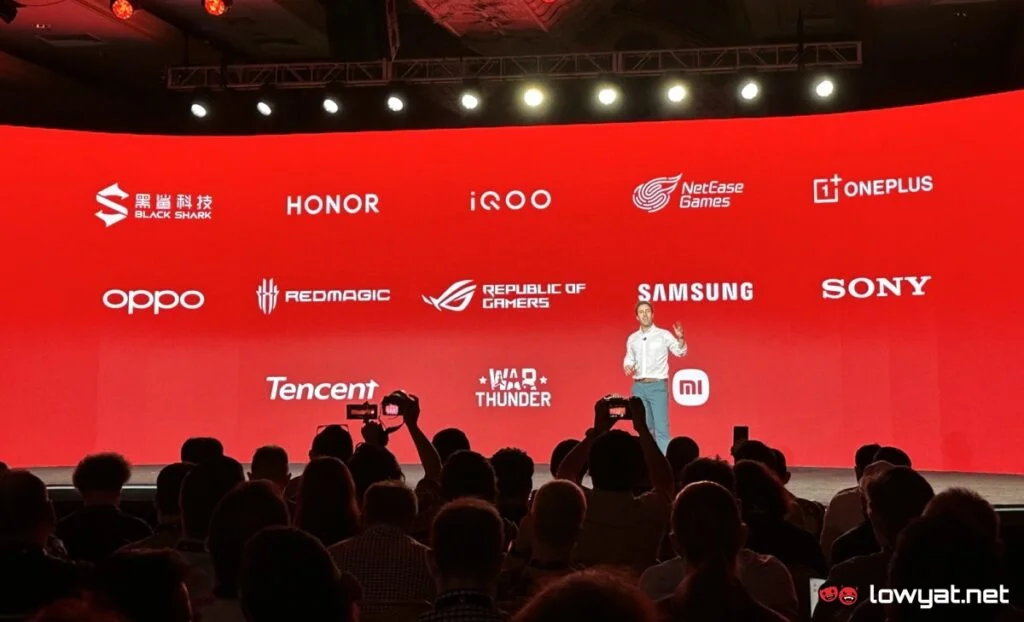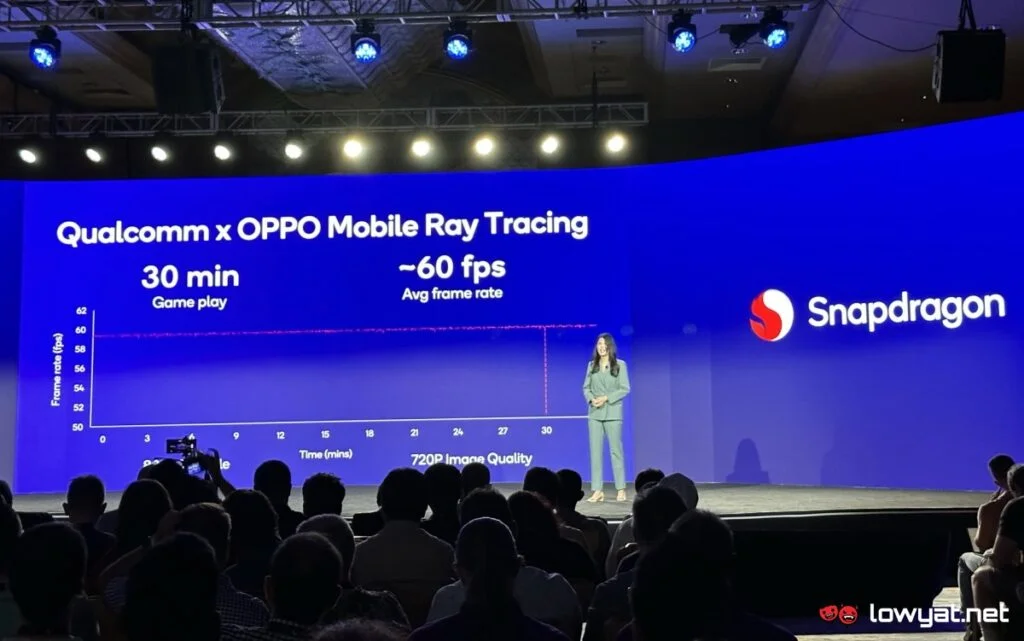During the Day 1 keynote of the Snapdragon Summit in Hawaii, Qualcomm noted that the improved Adreno GPU within the SD8G2 will be able to deliver hardware-accelerated real-time ray tracing. Not only that, the chip is able to perform it with a power consumption of under 5W.
At the same event, the company has also revealed a list of companies that are joining its effort to bring ray tracing into the mobile space. The list is certainly pretty extensive which naturally includes gaming phone manufacturers such as ASUS ROG, Black Shark and Red Magic. Major Android manufacturers including Samsung, Xiaomi, OPPO, HONOR, Sony, OnePlus, and iQOO have been listed too while there are also notable names from the gaming space such as Tencent, NetEase Games, and War Thunder. However, the exact level of development that is currently going on between these companies was not revealed during the keynote although Qualcomm’s Staff Marketing Manager, PJ Jacobowitz has said on stage that the first ray tracing-enabled mobile game is just “around the corner,”.
The only exception to this is OPPO who came to the event to provide a glimpse of their ray tracing collaboration with Qualcomm through a tech demo. At a glance, it seemed that the work that OPPO is doing in the ray tracing space with Qualcomm is already quite advanced to the extent that they are confident enough to show off the demo. With the help of the company’s PhysRay SDK which is being released as an open-source solution for game developers out there, OPPO claimed that games can run at a constant frame rate of 60fps on SD8G2 even with multiple ray tracing effects. That being said, it is also important to note that OPPO’s tech demo is running at HD 720p resolution. At the same time, the Chinese tech giant also said SD8G2’s ray tracing capability is able to increase render efficiency by 5x while reducing the CPU workload by 90%. OPPO also has noted that its next-generation Find X smartphone will be equipped with the new chip, so we now know at least one device that is already being prepped up for mobile ray tracing.


